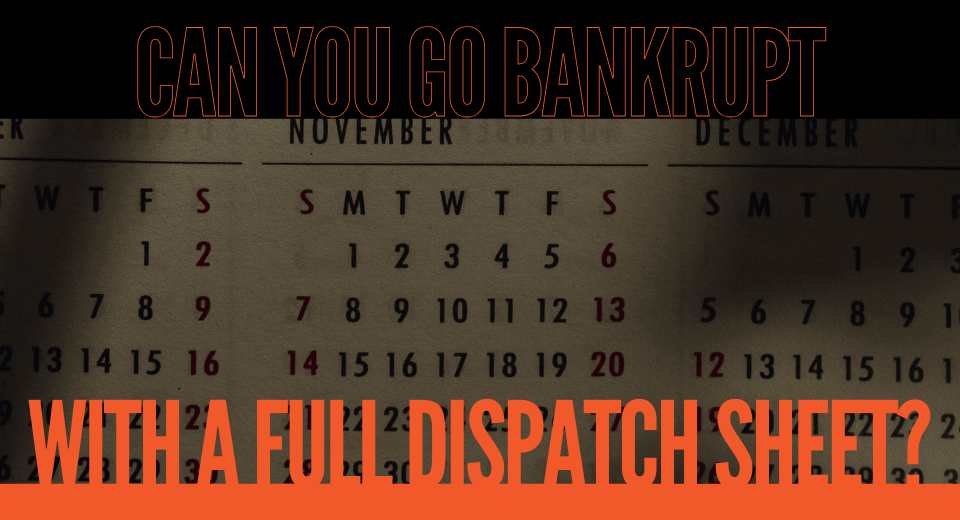
Drive Time Podcast: The Broker Conundrum in the Motorcoach Industry
October 27, 2025
User Portal 2.44 Release Notes
November 13, 2025Anyone who has ever run a charter company knows that when good bookings go bad, the first casualty is usually perspective. The phones heat up, the group leader is texting in all caps, and somewhere between the yard and the venue a plan that looked perfect on paper turns into a knot of small misses that feel like one big failure. I’ve been there more times than I care to admit. And yet, looking back, the difference between a customer we lost forever and a customer who sent us their next three trips rarely comes down to the problem itself. It comes down to our reaction in the minutes and hours that follow.
We like to imagine operations as a straight line: inquiry, quote, booking, flawless execution, five-star review. It’s tidy. It’s also fiction.
Real operations breathe. Drivers get sick. Traffic turns a 20-minute cushion into a 2-minute dash. Double overtime at a game puts a driver out of hours. A venue revises its group drop policy the morning your coach arrives. The work isn’t to pretend these things won’t happen; the work is to build a system—and a culture—that responds with clarity and speed when they do.
That’s where technology is supposed to help, but only if we ask the right things of it. Tech isn’t a magic bullet; it’s a compass. It should point us to the next best move, not just drown us in data. When a booking goes sideways, what we need most is a short path from awareness to action to accountability. We need the truth, quickly, shared with the right people, and captured in a way the organization can learn from tomorrow.
In our world, that starts before the “crisis.” If you’ve ever tried to untangle a bad situation with incomplete notes, three versions of an itinerary buried in random email inboxes, and a group leader whose main point of contact in your office is on vacation, you know the pain of improvisation. The operators who win in these situations are the ones who treat information as an operational asset, not an administrative chore. In TBN terms, that means the details that mattered at quoting still matter on the day of service—and they are visible where they’re needed: in dispatch, in the driver’s hands, and on the customer’s phone when appropriate. OpsDriver was built to reduce the distance between the sales promise and the service reality, and that distance becomes painfully obvious when something goes wrong.
A late coach, for example, is not just a “late coach.” It’s a chain of dependencies: a driver assignment, a pre-trip check, traffic conditions, passenger readiness at the pickup, venue staging rules, and maybe a last-minute route change. In the past, we’d react with guesswork and superhero dispatch efforts—call the driver, call the customer, hope the second unit is free, and pray drivers are answering their phones.
Today, technology can turn chaos into clarity with the right information at the right time— from trip requirements clearly laid out in quotes and bookings to alerts that call out if the wrong thing is happening before the vehicle and driver assignments are finished (think wheelchair lifts and drivers certified on those lifts), to visual tools that show exactly which drivers and vehicles are where—and who is available for a last-minute rescue.
But speed alone doesn’t save the day. Customers can feel the difference between a frantic scramble and a confident recovery. That confidence is born of preparation, and preparation is born of pattern recognition. Every operator has “that story” they tell at conferences and 20-group meetings—the heroic save where an owner or a veteran dispatcher pulled a rabbit out of a hat. Those stories are great for morale, but they’re not a strategy. Strategy is when your system remembers the playbook, not just your best person. It’s when an incident is tagged correctly, the actions are recorded, the costs are attached, and the post-trip review ties the operational reality back to the original quote. It’s when the pricing model adjusts for what we learned so the next quote is a little smarter and the next itinerary note is a little sharper.
This is one of the quiet superpowers of a connected platform. We talk a lot about efficiency—and rightfully so—but the longer-term win is organizational memory. If your team solves the same problem three times in three different ways, you didn’t really solve it. The operators who turn today’s losses into tomorrow’s “normal operations” take the sting of a bad day and turn it into a better tomorrow. They close the loop. In TBN, that looks like post-event debriefs that are more than hallway conversations. It looks like data that isn’t just stored but shaped into better decisions: adjusting pre-trip and spot-time windows; building smarter “places” functions that alert dispatch and drivers to issues before they ever leave the yard; tightening driver notes around ADA load times because the variance keeps costing you on-time performance.
And yes, there’s a human side you can’t automate. The way a dispatcher speaks when they call with a revised plan. The empathy in a driver’s voice when they explain a delay without making excuses. The follow-up email that arrives the next morning with a clear summary of what happened, what was done, and what you’re doing to prevent a repeat—paired with a consideration that matches the inconvenience. Technology can’t deliver empathy, but it can create the conditions where empathy arrives on time. It can free your team from hunting for information so they can focus on being present with the customer.
I sometimes get asked whether all of this makes us too reliant on screens. My answer is simple: the best operators use technology to get back to people faster. When a good booking goes bad, the clock starts ticking on trust. Transparency isn’t a big gesture; it’s a timeline. Here’s when we knew. Here’s who acted. Here’s the decision. Here’s the new plan. When your system supports that flow, a tough day becomes an opportunity to demonstrate character. When it doesn’t, the customer is left to assume the worst—their fear, anger, and frustration left to marinate in a void of engagement.
If you’re reading this and thinking, “We don’t have time to build all that,” I get it. No one wakes up one morning with perfect processes. But we can start with simple commitments. Capture the truth once, in one place. Make the right version of that truth visible to the people who need it. Design the hand-offs so your team has fewer choices in a crisis, not more. And once the dust settles, learn in public—internally, at least. Name what worked. Name what didn’t. Change one thing in the system, not five things in a checklist. That’s how a bad booking builds a better business.
The goal isn’t to avoid every mistake. The goal is to build a company that customers root for even when we stumble. Because they will choose to stumble with us again—on purpose—if we earn it. In a market where trips are won and lost on trust as much as on price, quick, compassionate, informed recovery is not an apology; it’s a competitive advantage. And the operators who combine disciplined technology with practiced humanity will keep turning well-intentioned stumbles into long-term loyal customers.
If you want to talk about how we’re wiring these principles into OpsDriver, TourDriver, and SchoolDriver—from real-time communications and contingency planning to powerful ways to capture and learn from your near misses—reach out. Let’s turn the bad days into the best proof that your team is the one to bet on.




